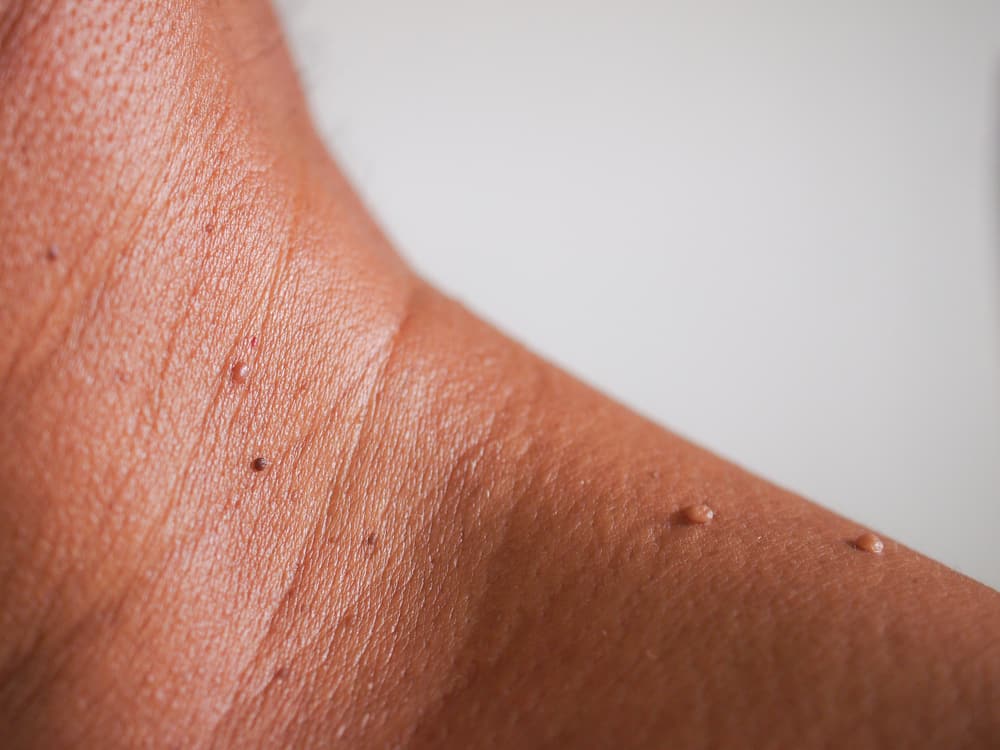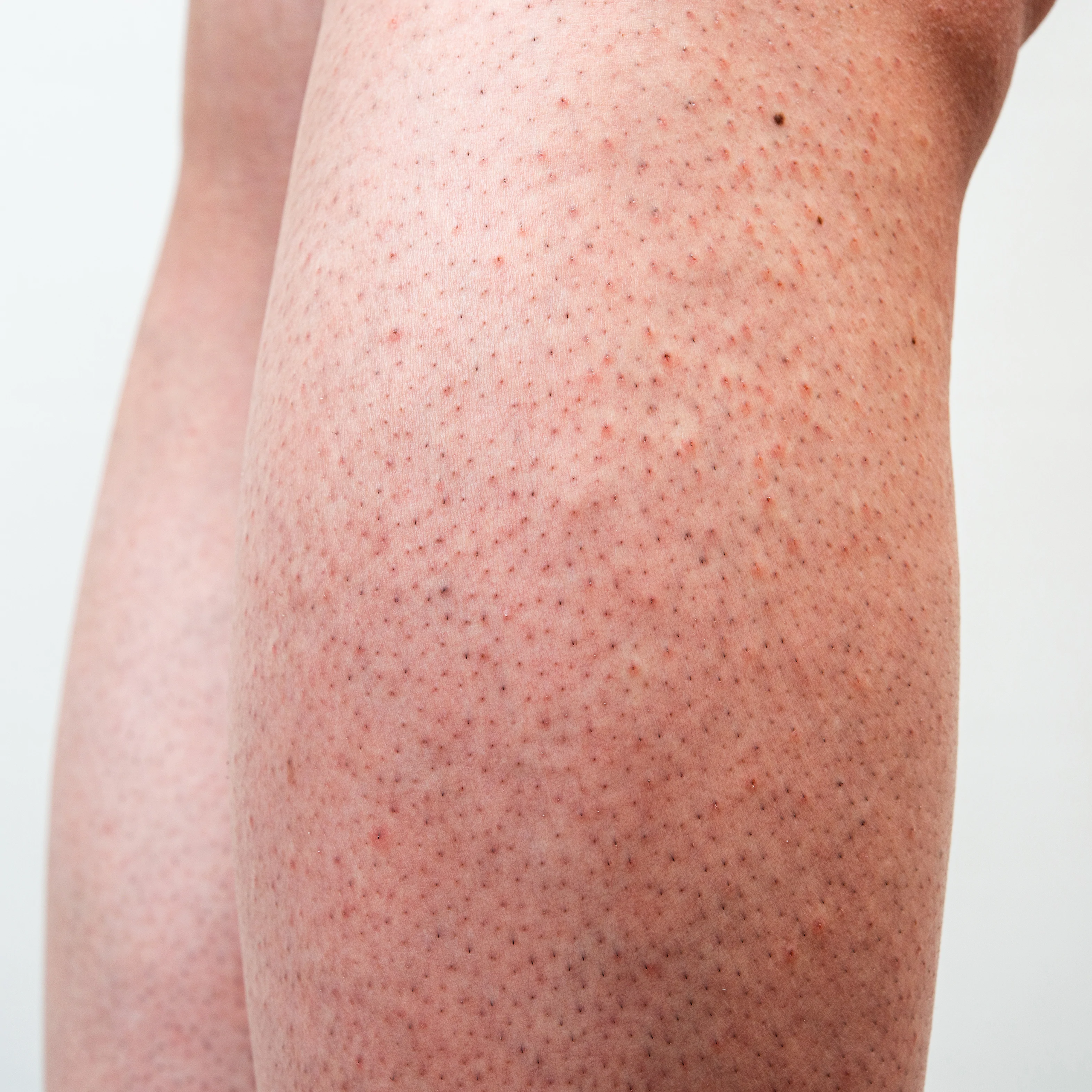Skin Tags are outer growths of the skin. There are many different types of skin tags and benign skin lesions that are cosmetically bothersome. Skin tags can take many shapes, sizes and colors, but generally, they are brownish color, round and slightly asymmetrical. Small skin tags that are black or brownish in color are called dermatosa papulosa nigra, and often occur on the face and neck. Skin tags that are large fleshy tumor-like outgrowths of the skin are called acrochordons. Large, flat, wartlike growths of variable color are called seborrheic keratosis.
People usually request removal for cosmetic reasons. There are many ways to remove them, but at Lumina Aesthetics, we use a method that has very little pain and leaves virtually no scarring. We use a state-of-the-art device that is quick, painless removal of these lesions.
While sheltering in place during the coronavirus pandemic, people are tackling all sorts of DIY projects from baking bread to sewing COVID-19 masks. Some people are even trying DIY surgeries, such as removing a skin tag.
Dermatologists caution that at-home surgery can go seriously wrong quickly and unexpectedly. Trying to remove a skin tag at home could cause a deep-seated infection. You could cause unstoppable blood loss.
If you have a skin tag that you want to remove, you can still contact Lumina’s dermatologist.
During the coronavirus pandemic, some dermatologists offer telemedicine appointments. This allows you to consult with a dermatologist while sheltering in place. If the spot on your skin needs immediate care, you can schedule an in-person visit.
FAQ of Skin Tags Removal – Lumina Aesthetics Clinic Bali
How many treatments will you need?
Most people require only 1-2 treatments for complete removal.
Will they grow back?
The answer is yes and no. Once we have removed the lesion, that specific lesion is gone. However, these types of lesions usually grow in clusters and numerous quantities. So if you are prone to skin tags, then you will probably get them again sometime in the future, perhaps in the same area or other areas as well.
Will there be any scarring?
The procedure itself does not cause scarring. How your body responds to the treatment determines whether you will scar. This means that if you normally scar easily, then yes, scarring may be an issue. Most people heal without any adverse consequence and we have not seen any scarring in our clinic.
How long will it take to heal?
Again, the time it takes to heal depends on your skin’s natural healing ability. Normal, healthy tissue typically heals within 3-5 days, while older, less healthy tissue can take up to two weeks to fully heal.
Is there anything special I have to do after the procedure?
You will be given a triple antibiotic cream to apply to the area. You may wash the area gently but pat dries immediately. Keep the treated area dry to avoid infection. If a scab develops, do not pick at the scab; let it fall off naturally. If the treated area is normally covered by clothing, please wear loose cotton clothing to prevent irritation of the area while it heals. Avoid the sun by wearing sunblock or a hat.
Can I go back to work after the procedure?
Yes, but the treated area may appear raw and red. We recommend that you take an afternoon off after this procedure. You can go back to work the following day.
Can I apply makeup after the procedure?
You can apply makeup around the treated area but not directly on the treated area.
Genital skin tags could also appear on the genitals of men or women. They may be the cause of more embarrassment than skin tags on other parts of the body. The reason is that genital skin tags are felt during sex and it is not uncommon for both the person and his/her sex partner to suspect them of any contagious disease, especially of sexually transmitted diseases (STDs). Another reason for concern over genital skin tags is their risk of hosting infections. But on the whole, groin skin tags themselves are not infectious or malignant. They are just skin tags of the genitalia in men and women of various age groups.
Penile Skin Tags
In men, genital skin tags appear mostly on the shaft of the penis. These appear most commonly in men who are sexually active which seems to confirm the general idea that skin tags develop where skin rubs against skin. Penile skin tags are a little raised above the skin level and are either the same color as the surrounding skin or a bit darker in tone. In some instances, very young children could get penile skin tags and the explanation seems to be circumcision. Penile skin tags in children are mostly found in children that were circumcised at birth or shortly afterward. Penile skin tags may increase in size.
Vaginal Skin Tags
In women, genital skin tags appear mostly in the vagina, especially in the folds of the outer layer called Vulva. Unlike men, women mostly get female skin tags in the vaginal area after pregnancy. However, in some women, they may appear at any age, more during adult life. Their appearance is the same as other skin tags on the body i.e. small floppy growths of skin that are a little darker in color than the surrounding area. In some women having vaginal skin tags, the size of the tags is increased during the menstrual period. However, after the period is over, the tags resume their normal size.
Genital skin tags, like other skin tags on the body, are mostly harmless growths of skin. They do not cause any annoying symptoms unless they are irritated manually or by clothing items, especially by underwear or (in men) condoms etc. In addition, genital skin tags are irritated by sexual activity. It is important to clean the genitals and the surrounding area of any fluids right after sex so as to minimize the risk of infection. If there is a notable change in the color, shape, and/or size of genital skin tags or if there is any feeling of irritation or discomfort that lasts longer than a few seconds, one should visit a doctor immediately.
Need additional information?
For additional information, please contact our patient care coordinator at +6281228888837, email us at [email protected], or visit our website at www.luminaaesthetics.com.






